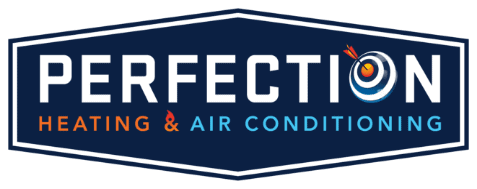It’s no secret—it can get pretty cold here in Minnesota. On a cold winter day, what if your home was perfectly heated, no matter the room? What about a bathroom that doesn’t send shivers down your spine whenever you get out of the shower?
Radiant floor heating brings plenty of comfort to your Maplewood, MN, home. Our team at Perfection Heating & Air Conditioning is happy to walk you through the process.
What Are the Advantages of Radiant Flooring?
Radiant floor heating is a stealthy way to heat your home—all the heating components are hidden under your floors. It’s not a traditional boiler system, with floorboards or hot-to-touch radiators that use up your valuable living space.
Hydronic heating, in particular, is proven to be more energy efficient than central heating and cooling, according to the U.S. Department of Energy (DOE). That’s because, over time, air ducts can become leaky, accounting for significant energy losses.
Conventional heating, ventilation, and air conditioning (HVAC) units can require extensive maintenance to maintain their efficiency. Plus, forced-air systems tend to stir up dust throughout your home. Radiant floors are easier to maintain and friendlier on your indoor air quality (IAQ).
How Does Radiant Floor Heating Work?
The warmth in your home comes from a series of pipes or electric panels installed underneath your floor. These pipes or panels radiate heat, which rises and naturally warms all the objects in each room.
Contrary to popular belief, you do not need ceramic tile floors. Radiant heat flooring works with natural hardwood, vinyl, or other floor coverings. Your flooring will always feel warm—but never too hot—as the heat evenly disperses throughout your Maplewood, MN, home.
Types of Radiant Floor Heating
Homeowners typically install electric or hydronic floors. Air-heated floors are another option, but these are typically reserved for commercial or industrial settings. Feel free to contact Perfection Heating & Air Conditioning with questions about which design best meets your home specifications.
- Electric radiant heat relies on a series of heat-producing cables underneath the flooring. Because of the high cost of electricity in most states, these systems work best as supplemental heating. They are popular in bathrooms. Electric floor heating is also a great solution for a home addition. They typically come with programmable thermostats to monitor and control usage.
- Hydronic radiant heat provides a whole-home solution. We install pipes beneath your floor that circulate water from a boiler or water heater. We use PEX piping, a highly flexible, heavy-duty plastic. These pipes can be fitted to panels, snapped into grids, fastened to aluminum grips, or secured in place with concrete.
Radiant Floor Heating Installation
Looking for a brand-new radiant floor system? Let our specialists help you out. Our team will help make your dream home come true. We’re certified to perform even the most complex heating, cooling, and plumbing projects.
Whether you’re looking to upgrade, build a home addition, or even a new home, we can help. Be sure to schedule service online today for a free consultation and accurate estimate. Together, we can craft a home heating system that you’ll be satisfied with for years to come. We’ll tailor a solution that fits your home needs and budget.
Radiant Floor Heating Repairs
Are you noticing a cold spot or detecting a mechanical failure? We’re ready to assist. Our team of specialists is friendly and responsive. We have certified experts that can take care of any of your home needs.
If your radiant floor is acting up, don’t worry. We use thermal technology to detect cold spots. This precision approach saves money and time, with minimal impact on your flooring.
Don’t let it wait. Schedule a repair online today. We’ll always let you know how we plan to tackle the job and what it will cost before performing a repair. We bring years of experience and training to every job—you can count on us for quality work and craftsmanship.
Radiant Floor Heating Maintenance
Did you know most costly repairs can be prevented through early intervention? Radiant floor heating is a valuable investment—protect it with yearly preventative maintenance.
We offer complete maintenance services for all your home needs. You put a lot into your home—let us keep it in top shape.
Schedule maintenance online today for a detailed, courteous inspection. If you’d like to receive notices when it’s time for maintenance, join our Pro Tune Maintenance. You’ll also receive discounts, priority service, and more.
Control Your Comfort Today
Perfection Heating & Air Conditioning is pleased to bring premier heating and cooling services to homes and businesses in Maplewood, MN. Call us at 651-777-7620 or request service online today to learn more about radiant flooring along with our other services.
